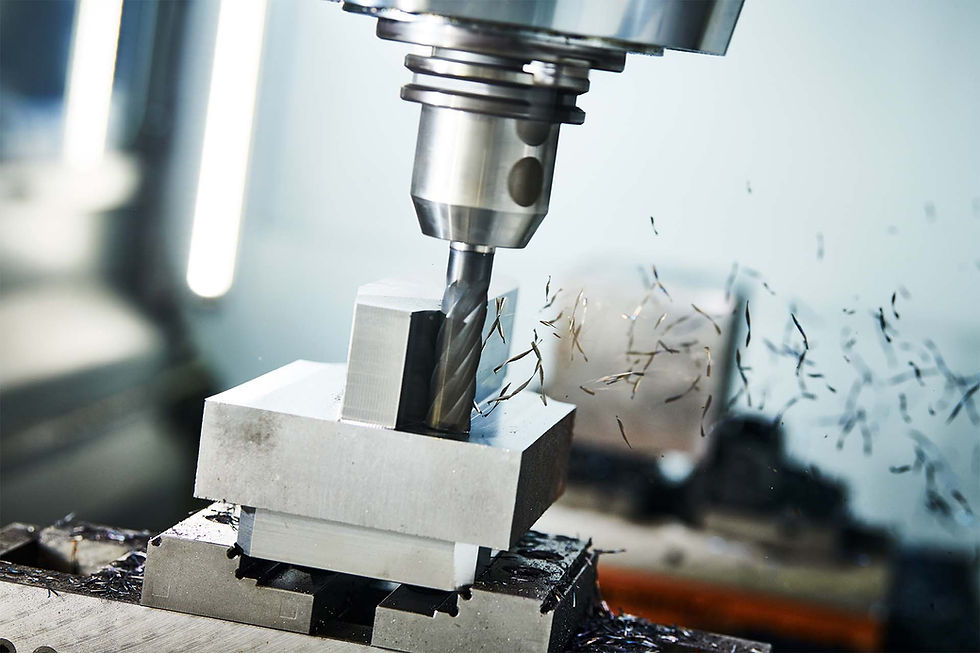The Benefits of High-Feed Milling in CNC Machining
- Calvin Wu
- May 5, 2023
- 2 min read
The Benefits of High-Feed Milling in CNC Machining
Outline:
I. Introduction
High-feed milling as a popular CNC machining technique
Benefits overview
II. Increased Efficiency and Productivity
A. High material removal rates
B. Reduced cycle times
C. Better chip formation and evacuation
III. Cost Savings
A. Lower power consumption
B. Reduced tool wear and longer tool life
C. Minimized need for additional operations
D. Coolant management and usage reduction
IV. Improved Surface Finish
A. Less heat generation
B. Consistent cutting forces
V. Versatility with Workpiece Materials
A. Suitable for a wide range of materials
B. Examples of high-feed milling applications
VI. Toolpath Optimization and Software
A. Importance of optimized toolpaths
B. CNC software for high-feed milling
VII. Conclusion
Summarize the benefits of high-feed milling
Encourage further exploration and adoption of high-feed milling techniques

Introduction
High-feed milling has become a preferred technique in the CNC machining industry due to its numerous benefits, which we will explore in this comprehensive article. From boosting efficiency and productivity to reducing costs and improving surface finishes, high-feed milling is transforming the way manufacturers approach CNC machining.
Increased Efficiency and Productivity
High-feed milling allows for high material removal rates and reduced cycle times, resulting in a more efficient machining process. This technique promotes better chip formation and evacuation, which helps to prevent chip re-cutting and improves tool performance.
Cost Savings
High-feed milling is also known for its cost-saving benefits. By consuming less power, it reduces energy costs for manufacturers. Furthermore, the technique minimizes tool wear, extending tool life and saving on replacement costs. Additionally, high-feed milling often eliminates the need for additional operations, streamlining production and reducing overall expenses.
Coolant management and usage are also optimized, as shown in the

Improved Surface Finish
The high-feed milling process generates less heat, which results in improved surface finishes on machined parts. Consistent cutting forces contribute to uniform finishes.This superior surface quality can reduce or eliminate the need for secondary finishing processes.
Versatility with Workpiece Materials
High-feed milling is versatile, accommodating a wide range of workpiece materials, including steel, stainless steel, aluminum, and titanium. This technique is suitable for various applications, from aerospace to automotive, and from medical to mold and die industries.
Toolpath Optimization and Software
To fully leverage the benefits of high-feed milling, it is crucial to optimize toolpaths for efficient cutting. Advanced CNC software can help generate optimal toolpaths specifically designed for high-feed milling, ensuring that the process is as effective and accurate as possible.
Conclusion
In summary, high-feed milling offers numerous advantages in CNC machining, including increased efficiency, productivity, cost savings, improved surface finishes, and versatility with workpiece materials. By optimizing toolpaths and utilizing the appropriate CNC software, manufacturers can harness the full potential of this powerful machining technique. As the CNC machining industry continues to evolve, high-feed milling is set to play an increasingly important role in shaping its future.



Comments